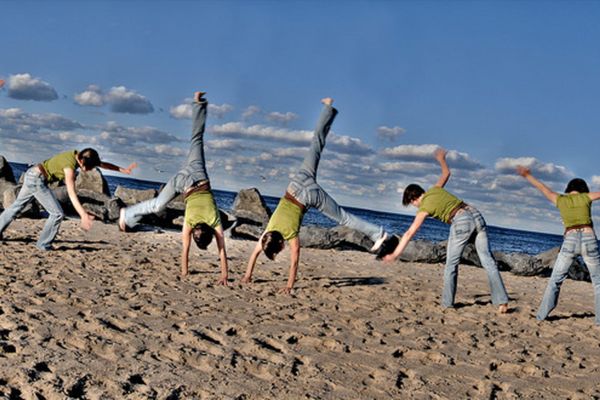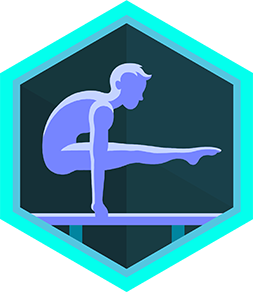Do a cartwheel
Learn and practice a cartwheel by warming up, breaking the skill into steps, using a straight line for guidance, and building confidence safely.



Step-by-step guide to do a cartwheel
How to Learn a Cartwheel (Step-by-Step for Beginners)
Step 1
Clear a space about an arm-span wide so you have room to move.
Step 2
Lay down a soft mat or use the carpet for a safer landing.
Step 3
Make a straight line on the floor with tape or rope or chalk to guide your cartwheel.
Step 4
Put on comfortable clothes and shoes or go barefoot so you can move easily.
Step 5
Jog in place for 60 seconds to warm up your body.
Step 6
Circle your wrists slowly for 30 seconds to warm and loosen them.
Step 7
Swing your arms and reach up to stretch your shoulders for 30 seconds.
Step 8
Stand beside the line with your stronger leg forward and practice one big lunge over the line.
Step 9
From the lunge position, place your hands on the line one at a time to practice hand placement.
Step 10
With both hands on the line, kick your back leg up and over once to feel the cartwheel motion.
Step 11
Ask your adult to spot you and try one assisted cartwheel along the line for safety and confidence.
Step 12
When you feel ready, try a full unassisted cartwheel along the line and land facing the same way.
Step 13
Share your finished cartwheel and progress on DIY.org
Final steps
You're almost there! Complete all the steps, bring your creation to life, post it, and conquer the challenge!


Help!?
What can we use instead of a soft mat or tape if we don't have them?
If you don't have a soft mat, fold a thick blanket or several towels on the carpet for a safer landing, and if you lack tape/rope/chalk to make the straight line, use a jump rope, a strip of painter's or masking tape, or a length of string as the guide.
I'm falling forward or can't get my legs over—which steps should I repeat to fix it?
If you fall forward or can't complete the rotation, repeat 'practice one big lunge over the line,' rehearse 'placing your hands on the line one at a time' and 'kick your back leg up and over once' while having an adult spot you during the assisted cartwheel step.
How should I change the activity for younger kids or older kids?
For younger children shorten the warm-ups like 'jog in place for 60 seconds' and 'circle your wrists for 30 seconds,' focus on knee cartwheel drills and keep the adult spotting during the assisted cartwheel, while older kids can increase the run-up, practice the full unassisted cartwheel along the line, and use a thicker mat for harder landings.
How can we make this cartwheel activity more challenging or personal?
To extend and personalize the activity, decorate the straight line with colored tape, time or count how many successful cartwheels you land in a row, try starting with the non-dominant leg, record your final unassisted cartwheel, and then share your finished cartwheel and progress on DIY.org.
Watch videos on how to do a cartwheel
How to EASILY do a cartwheel! (Tutorial)
Facts about gymnastics basics for kids
⏱️ Short, regular practice sessions (10–15 minutes) usually help kids master motor skills faster than long, tiring drills.
👣 Most people favor a ‘lead’ side (left or right) for cartwheels — trying both sides helps make you ambidextrous!
🛡️ Practicing on a soft mat with a spotter builds confidence and makes early cartwheels much safer and more fun.
📏 Teachers often draw a straight line on the floor to help kids keep their hands and feet aligned while learning.
🤸♀️ A cartwheel is a full-body move — arms, shoulders, core and legs all pitch in to make it smooth and strong.
How do I teach my child to do a cartwheel?
What materials do I need to teach a child a cartwheel?
What ages is learning a cartwheel suitable for?
How can I keep my child safe while practicing cartwheels?


One subscription, many ways to play and learn.
Only $6.99 after trial. No credit card required



